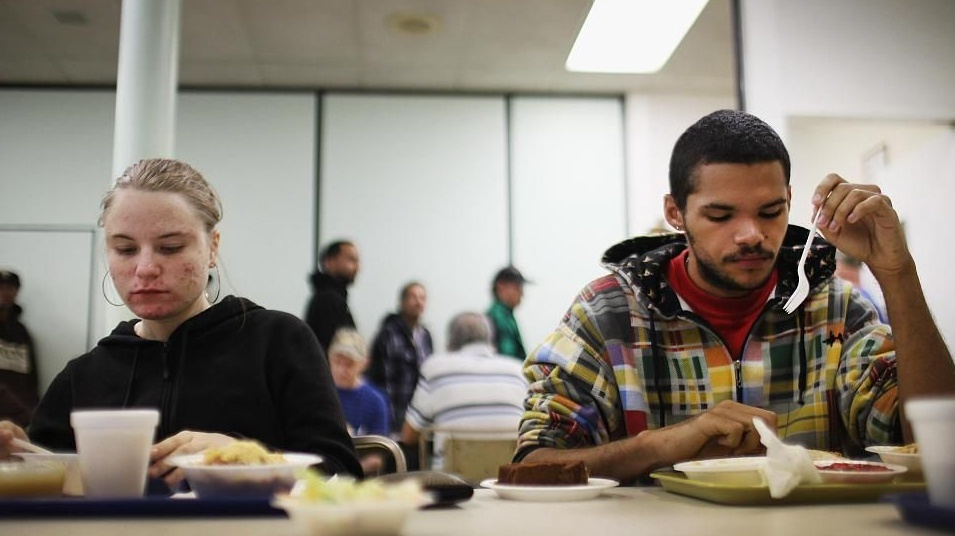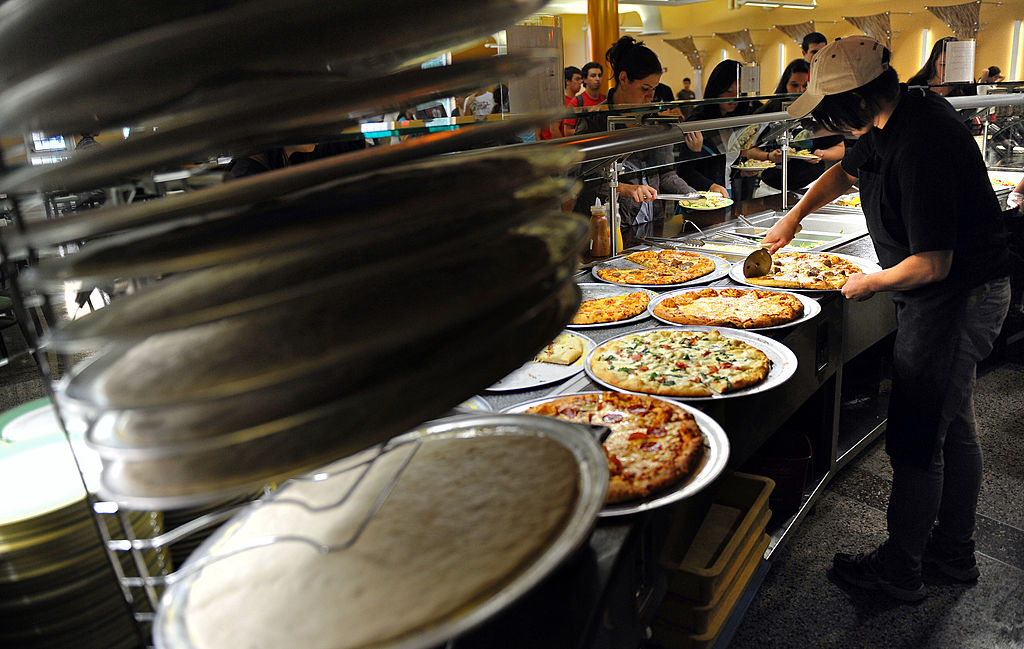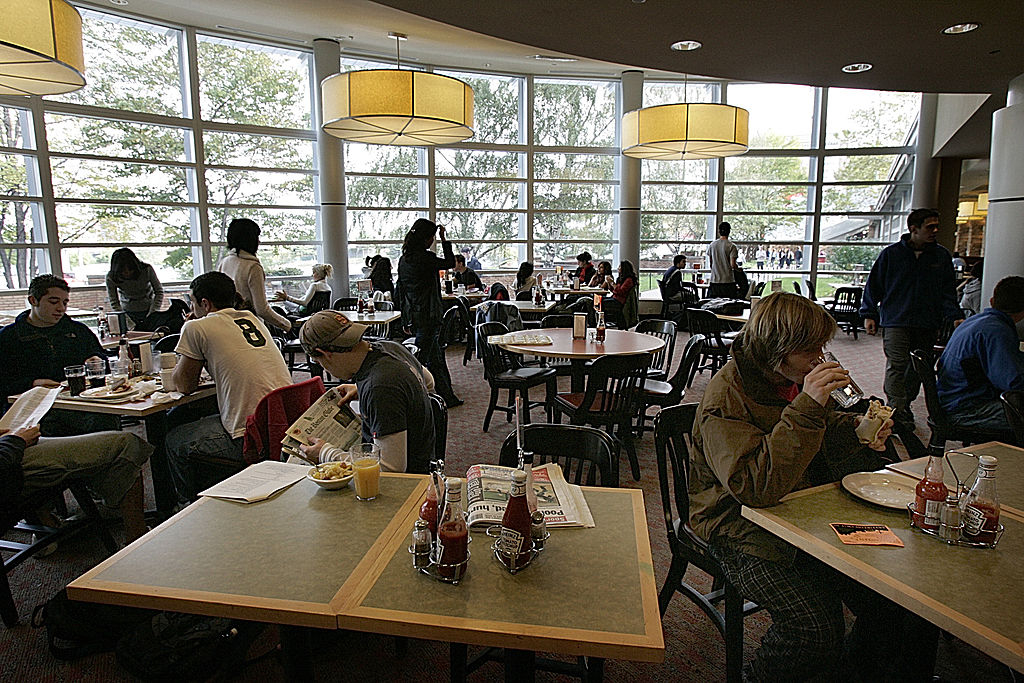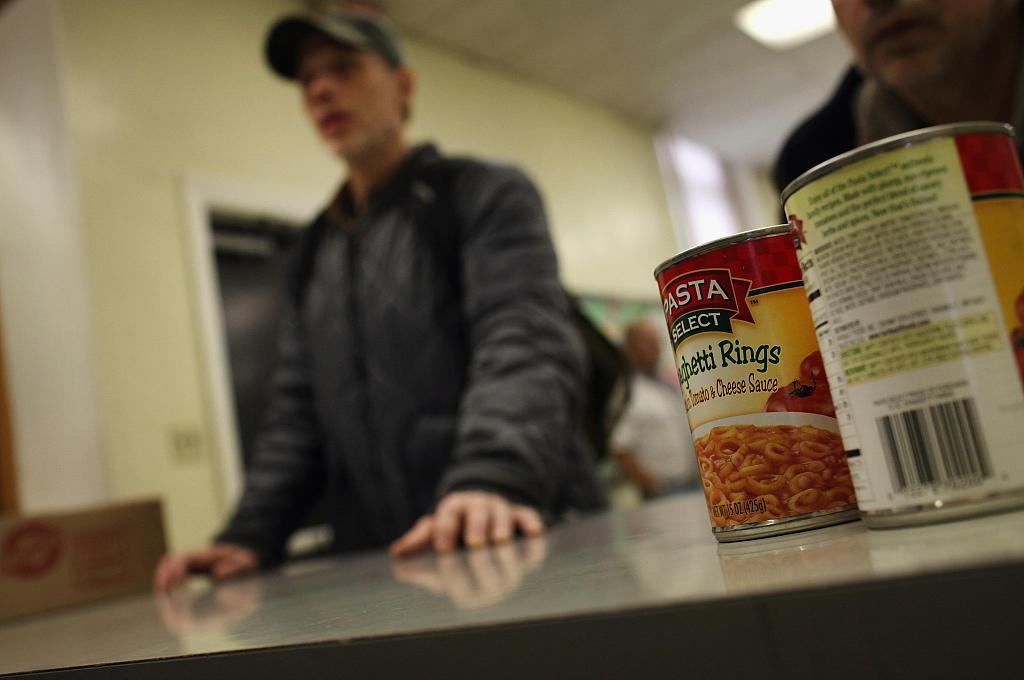
North America
09:07, 08-May-2019
Hunger on U.S. college campus: Tuition or food?
Updated
22:06, 10-May-2019
By Yu Jing

Christopher Katsaros, a senior from Brooklyn College in New York, oftentimes had to choose between spending five dollars on buying a sandwich or taking the train to go to school.
Many times in order to live, he chose the former, ending up missing so many classes that he now opted to temporarily suspend his academic pursuit.
If you think Katsaros is in the minority, a recent survey by Temple University's Hope Center for College, Community and Justice (Hope Center) shows that he is not. A striking number of 45 percent among respondents in 123 colleges across the U.S. reported food insecurity - not having access to nutritious, affordable food.
As colleges across the U.S. embrace an increasing number of first-generation college students, or students from low-income families, support structure available to students are not catching up.
Soaring cost at college campus
It is well documented that colleges across the U.S. are experiencing soaring tuition cost, but this does not reveal the full picture of how expensive it is to get an education.
Every month, Katsaros, who lives in one of the most expensive cities in the world, needs to pay 750 U.S. dollars for rent and 130 U.S. dollars for transportation, not to mention other expenses. Though he has a Pell Grant, a government subsidy for students with financial need to go to college, and student loans, he was often left with no money to buy the monthly subway pass. Those financial aids are merely enough to help him cover the rent.

Student slices pizza at a university dining hall. /VCG Photo
Student slices pizza at a university dining hall. /VCG Photo
Choosing between a sandwich and a subway ticket to school thus became a frequent dilemma.
"I was not eating three meals a day. I eat maybe one or two meals a day," said Katsaros in a phone interview with CGTN. He said he normally would try to set aside around 30 dollars for food every week, which means less than five dollars every day.
The situation is particularly grave at community colleges and public universities. In the university that Katsaros was in, Brooklyn College of the City University of New York (CUNY), roughly 48 percent of the 22,000 students responded to the 2018 survey of Hope Center said they were food insecure in the prior 30 days.
But in private universities, incidents of students going through hunger pangs are not uncommon.
At a private university not far from CUNY, New York University, the silent crisis of food insecurity recently prompted students to propose discounted meal plans at the school cafeteria. Instead of eating the buffet-like meals at dining halls, students asked for more affordable options.
Changing demographics of college students
The traditional image of a college student is a care-free 18-year-old with the full support from the family, financially and emotionally. But today, the demographics of college students are changing.
From 1982 to 2016, the proportion of students from low-income families attending colleges in the U.S. increased from 31.2 to 65.4 percent, according to data from the National Center for Education Statistics. First-generation college students, whose immediate family members did not have the fortune to attend higher education, are now entering university.
Though Katsaros's parents have tried every means to support him at the early stage of his academic life, they cannot continue their support anymore. While he worked part-time in a retail business to sustain himself, his income was not stable.
It used to be the case that family is the source of financial support for college students, but in recent years, the reverse is taking place – students from lower-income families are the breadwinners, though plagued by hunger themselves.

Lunch at a dining hall. /VCG Photo
Lunch at a dining hall. /VCG Photo
Chris Natoli, graduate teaching fellow and adjunct professor at CUNY, who teaches at the math department, said that many of his students are working full-time and are parents. Even normal college-age students are working part-time, even if they live at home with their parents.
"A lot of these students are working class from immigrant families. They have to work to pay their rent or help out with their family's rent," Natoli said.
Students experiencing basic needs insecurity actually work more than their peers, said Tiffani Williams, a research associate at Hope Center which conducted the ground-breaking survey, in an email interview with CGTN. But minimum wage, which is usually what full-time students receive, has not kept up with cost-of-living increases.
Moreover, tuition has gone up but, more importantly, the financial supports available to students have not kept up with the increased cost of living, she added.
Aid policies that are not catching up
To help address the insidious crisis of food insecurity on campus, colleges across the U.S. opened food pantry where students can get nonperishable food for free up to a limit. Some students took it upon themselves to address the hunger pangs through meal-sharing – those who don't use up their credit at the dining hall can give it for free to students who are hungry.

A food pantry in Reading, Pennsylvania. /VCG Photo
A food pantry in Reading, Pennsylvania. /VCG Photo
But those solutions, though of great help in times of need, are not sustainable, Katsaros said. Because of school and job responsibilities, he was not able to go to the food pantry during its opening hours and the appointment requirement made it hard for him to go in times of crisis.
Federal government aid can also be restrictive. Tiffani Williams, a research associate at Hope Center, said that many food-insecure students that are eligible for the government's Supplemental Nutrition Assistance Program (SNAP) do not receive it for one reason or another. The U.S. Government Accountability Office estimates that 57 percent of the food insecure eligible students don't receive SNAP.
Access to public assistance needs to be further expanded for college students, she added.
In the run-up to the 2020 presidential election, issues of student debts and college affordability have already featured heavily in the national discussion. Bernie Sanders has called for tuition-free college whereas Elizabeth Warren has proposed to eliminate student loans for indebted students from lower-income families.
And this is where Christopher Katsaros, who is now looking for a job so that he can graduate next year, pins his hopes on. "People can't go and learn properly if they are hungry or if they are stressed thinking about if they can pay their bills on time."

SITEMAP
Copyright © 2018 CGTN. Beijing ICP prepared NO.16065310-3
Copyright © 2018 CGTN. Beijing ICP prepared NO.16065310-3